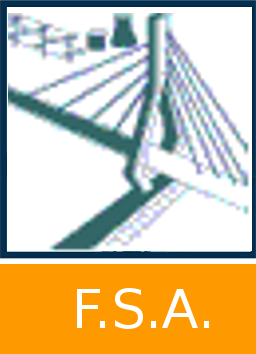Development of vibration techniques allowing the preventive detection of damage on NH90 helicopters
Pirard, Elena 
Promoteur(s) :
Dimitriadis, Grigorios 
Date de soutenance : 24-jui-2021/25-jui-2021 • URL permanente : http://hdl.handle.net/2268.2/11668
Détails
| Titre : | Development of vibration techniques allowing the preventive detection of damage on NH90 helicopters |
| Titre traduit : | [fr] Développement de techniques vibratoires permettant la détection préventives de dégâts sur NH90 |
| Auteur : | Pirard, Elena 
|
| Date de soutenance : | 24-jui-2021/25-jui-2021 |
| Promoteur(s) : | Dimitriadis, Grigorios 
|
| Membre(s) du jury : | Uyttenhoef, Nicolas
Golinval, Jean-Claude 
Andrianne, Thomas 
|
| Langue : | Anglais |
| Nombre de pages : | 98 |
| Mots-clés : | [en] Modal Analysis [en] Health Monitoring [en] Vibration [en] PolyMAX |
| Discipline(s) : | Ingénierie, informatique & technologie > Ingénierie aérospatiale |
| Institution(s) : | Université de Liège, Liège, Belgique |
| Diplôme : | Master en ingénieur civil en aérospatiale, à finalité spécialisée en "aerospace engineering" |
| Faculté : | Mémoires de la Faculté des Sciences appliquées |
Résumé
[en] Nowadays, the challenge of detecting damage on helicopters components, resulting from the high level of vi- bration subjected by the helicopter, the wear, the environment of flight operation, or a maintenance error, is more present than ever. Therefore, appropriate and effective preventive maintenance allows to ensure the crew’s safety and a cost reduction of the helicopters. The military helicopter NH90 is a multi-role aircraft operating in the most challenging conditions over land and sea. Currently, the NH90 is equipped with many accelerometers at several points of the structure and of the rotating components, measuring vibrations. A software can analyse these data to monitor the technical health of the helicopter. Unfortunately, this software presents some defects, such that some damaged components were not always detected.
This thesis aims to identify the defects of this current software and to overcome these problems by suggesting some improvements and new techniques allowing a preventive and effective detection of damages. In order to do this, two different types of vibration analyses are proposed, depending on the available data set.
First, the temporal signals resulting from accelerometers are analysed using the modal analysis in the frequency domain to present to the user a global vision of the vibration level of the helicopter components. The software does not currently use this method. The latter allows the identification of the modal parameters of the structure, and the damage detection is based on the principle of shifts in natural frequencies observation. This analysis uses the temporal signals from helicopters having already had existing problems and undetected damage from the current software.
A second analysis is done on another helicopter presenting an existing problem that the current software did not detect. Due to the lack of available temporal signals for this helicopter, the study is focused on health indices computed by the software, referencing special damages such as a shaft imbalance or misalignment, under the form of a single point given a value in [g] unit. The process consists of comparing these health indices to a threshold, for which the exceedance is the result of a potentially damaged component, generating an alert. The existing software currently uses this method, but the alerts for damage are often avoided due to the insufficient number of valid data. Therefore, new solutions are suggested to validate more data and obtain alerts in good time.
The results of these two cases studies proved that the analysis of the modal parameters in the spectrum is an effective technique to quickly detect deterioration of components before leading to severe damage or an accident. Moreover, the improvement of some filters defining the validity of the data allows obtaining a higher number of health indices to analyse with better reliability, resulting in quick detection of the damaged component.
Fichier(s)
Document(s)

 Thesis_PIRARD_Elena_s162444.pdf
Thesis_PIRARD_Elena_s162444.pdf
Description: -
Taille: 16.84 MB
Format: Adobe PDF

 Abstract_PIRARD_Elena_s162444.pdf
Abstract_PIRARD_Elena_s162444.pdf
Description: -
Taille: 178.01 kB
Format: Adobe PDF
Citer ce mémoire
L'Université de Liège ne garantit pas la qualité scientifique de ces travaux d'étudiants ni l'exactitude de l'ensemble des informations qu'ils contiennent.


 Master Thesis Online
Master Thesis Online




